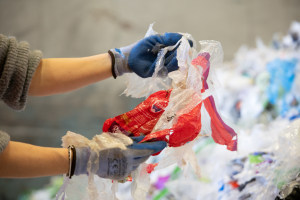Almost 20 years ago, the launch of Fever Tree tonic water transformed the mixer drink market. Kim Berry speaks to the company’s ANZ managing director, Andy Gaunt, about its growth and plans for the region.
Gin was what brought Fever Tree founders Charles Rolls and Tim Warrillow together. Warrillow wanted to make it and Rolls already was. In fact, Rolls owned Plymouth Gin and had rebuilt the brand into a highly successful business before selling it.
Drawing on his experience, Rolls’ advice was to think about the mixer rather than the gin.

Fever Tree ANZ managing director Andy Gaunt says, “Charles said that being a gin distiller was demoralising and at worst depressing. For wine makers and beer brewers, the quality, passion, and dedication in their products is there when it walks out the door and still there when people consume it.
“For gin makers, he said, all that dedication and focus on ingredients that is encapsulated in the bottle is destroyed when the customer drowns it in artificially flavoured and sweetened fizzy drinks.”
That discussion set the pair in a different direction. What if there was a tonic water that showcased the work of the distiller? What ultimately became the company’s slogan was the foundation stone of the company – if three quarters of your G&T is the tonic, wouldn’t you want it to be the best?
“Even today I get such a buzz when I see that light bulb go off in someone’s head. Mixers were a commodity for decades. The price had been driven down, so manufacturers swapped out real ingredients for artificial ones because they still wanted to make money, and retailers couldn’t charge any more for it,” Gaunt says.
From the outset, the pair agreed that no artificial sweeteners would be used, a novel move in the drinks industry at the time. Their founding principle was for Fever Tree to champion naturally sourced ingredients and refuse to compromise taste or quality.
Ingredient credentials
Once the wheels were in motion, Warrillow went in search of quinine, the heart of all great tonic waters. It is an alkaloid extracted from the bark of cinchona officinalis, also known as the fever tree. He eventually founded a plantation in the Congo.
“That dedication to sourcing the best applies to all our ingredients. Our Mediterranean Tonic features rosemary and lemon thyme sourced from a fourth-generation distillery in the south of France.
“We developed our Cola using Madagascan vanilla with the single purpose: to bring out the best in dark spirits, like whiskies and rum.
“Three varieties of ginger from Cochin in India, Nigeria, and Ivory Coast are blended to create a remarkably deep, fresh and true taste for our ginger ales and ginger beer and our limes come from the Yucutan Peninsula in Mexico,” Gaunt explains.
Those ingredients are then shipped to Fever Tree’s facility in the UK for manufacturing. With the company now in 85 countries, it has had to start manufacturing closer to the markets.
Gaunt says there are plans to build a factory in Australia to supply the local market, something that had been earmarked but then stalled due to Covid.
“I learned a lot – as we all did – about the cost of shipping, the complexities, challenges, and financial issues stemming from the pandemic. When you have a product that requires moving ingredients and product from place to place, and your shelf life is not as long as those using artificial ingredients, there is a lot of complexity.
“We are always looking at how we can be better partners to our customers and being able to address those issues now is exciting,” he says.
It's all in the bubble
The Fever Tree team spend a lot of time understanding the science of carbonation, the bubbles in the beverage. Gaunt says carbonation is “hugely important” to our enjoyment of a drink.
“When CO2, a toxin, enters our body, it responds to it as a toxin, even though it isn’t toxic in the small amounts we consumer. But to fight it, our bodies release endorphins, which also make us feel great. When we take that mouthful of fizzy drink, our brain gets an endorphin rush and tell us to go back for more.”
There is, however, a downside. Big CO2 bubbles reduce the palate’s ability to taste, so the challenge becomes creating a very high carbonation but with very small soft bubbles – like Champagne – so the flavour of the gin, whisky, tequila, or other spirit is not only not diluted, but highlighted.
The other challenge is the longevity of the bubble. Gaunt says, the goal is for a drink to still be fresh and effervescent ten minutes after it was made.
“It’s not something you can accomplish with a machine at home or with a soft drink. We think there is a big difference between bubbles in a mixer and in a soft drink, and the R&D we’ve invested into this is one of the reasons Fever Tree is so different,” he says.
Into the mix
With brand awareness still the focus, more recently Fever Tree has been expanding its distribution, availability, and range.
“It’s an exciting time for the business on a number of fronts. The last five years have been very strong with the global spirits boom driving that. We’ve been fortunate having a great product and powerful message around the three quarters concept. Our biggest goal was to give consumers choice,” he says.
Most of Fever Tree’s growth has come from its innovation in a neglected category with its tonic water range but the company has also been looking beyond the G&T heartland, adapting with consumer trends of spritz style drinks and the increasing popularity of whiskey.
“We’re looking at different formats for different occasions, including the growing interest in better for you types of beverages,” Gaunt says.
In its low-calorie range, the company uses a fructose that has 15 calories per 100ml.
“Its low sugar and low calorie, and the result of us always trying to work on the balance but never compromising on taste. We straddle the soft drink and alcohol markets and the most important driver of purchasing behaviour is taste.”
Gaunt says there’s still room for more consumer education, particularly around price.
“When you break down the cost, it’s less than a third of the price of a cup of coffee. We’re cheaper than a Mars Bar – and when you consider the provenance of our ingredients, it is an affordable way of having a great tasting drink,” he says.
A work in progress
He says there is still a big job for the company to educate the bar trade on the benefits of using a quality mixer, with almost all the spirit drinkers he’s spoken to saying they would pay more if the mixer came from a glass bottle rather than the post-mix machine.
“It’s a big objective for us, to work with the trade and communicate that they can charge $2-3 more for a drink in a tall glass with a quality mixer. There is a real opportunity to look differently at the way spirits are served in venues,” he says.

“We are well establishedin the UK because that’s where the business began, but internationally we are still very young. The first time we had a product on shelf in Woolworths or Coles was 2018, that’s only five years ago. It has transformed the category of tonic water, but we have a lot more work to do to continue that story for dry ginger ale, ginger beer, and other sodas.”
With consumers increasingly enjoying cocktails, Fever Tree has launched a new range of cocktail mixers, the first release is a margarita and a mojito mix.

“When we looked at what was on the market, there were the same issues we’d found with mixers – artificial sweeteners and low-quality ingredients.
“This is not about replacing a bartender making wonderful cocktails, but for making a drink at home with two ingredients – a good quality tequila and a measure of our margarita mix.
“It’s a new venture for us but it sits very much in the heartland of what Fever Tree is all about – helping customers make the best tasting drinks with all natural ingredients.”
With plans to broaden operations, develop new markets, and gain greater market share, Fever Tree has not only brought value and margin into a category that had been devoid of it for a long time, it has given consumers greater choice.
This story first appeared in the October-November edition of Food & Drink Business magazine.







